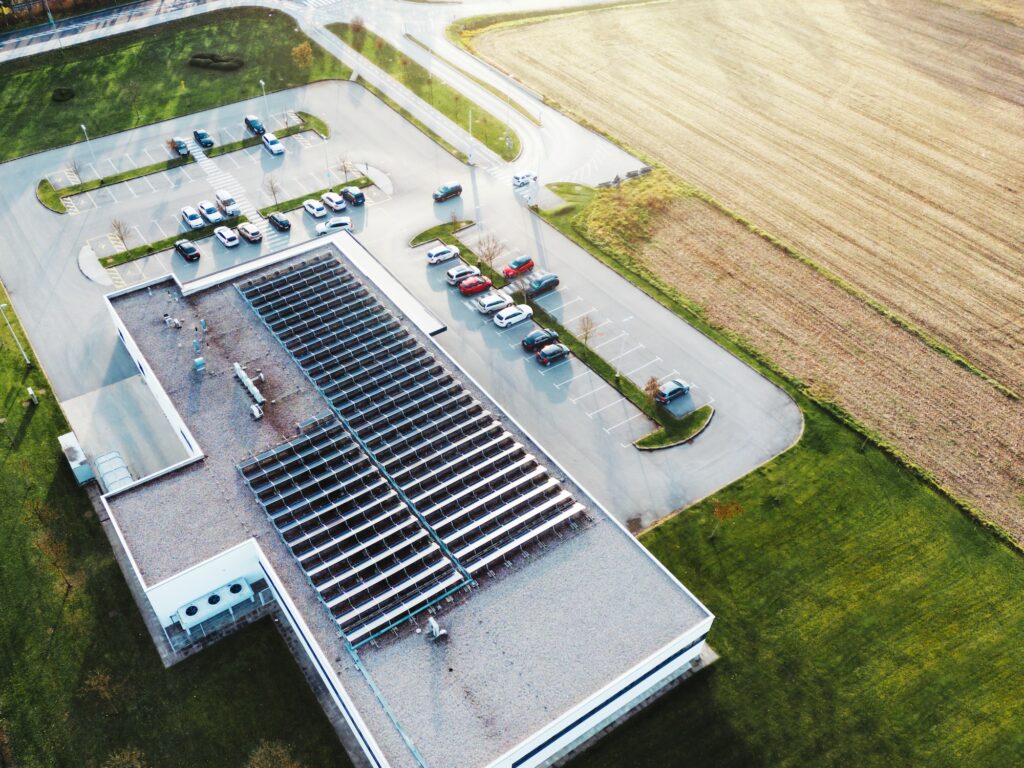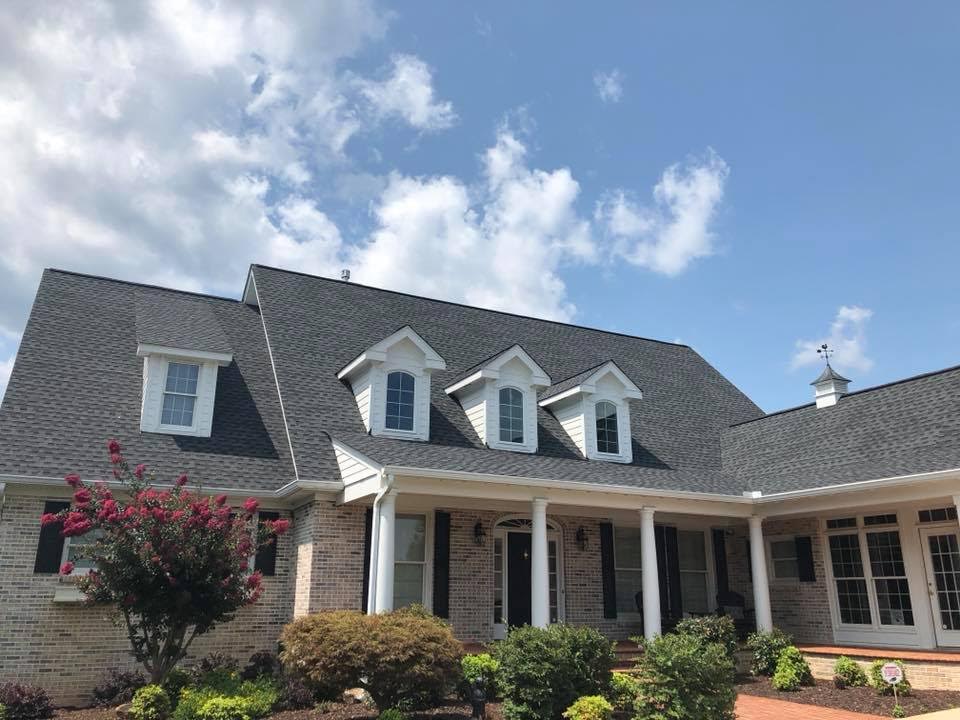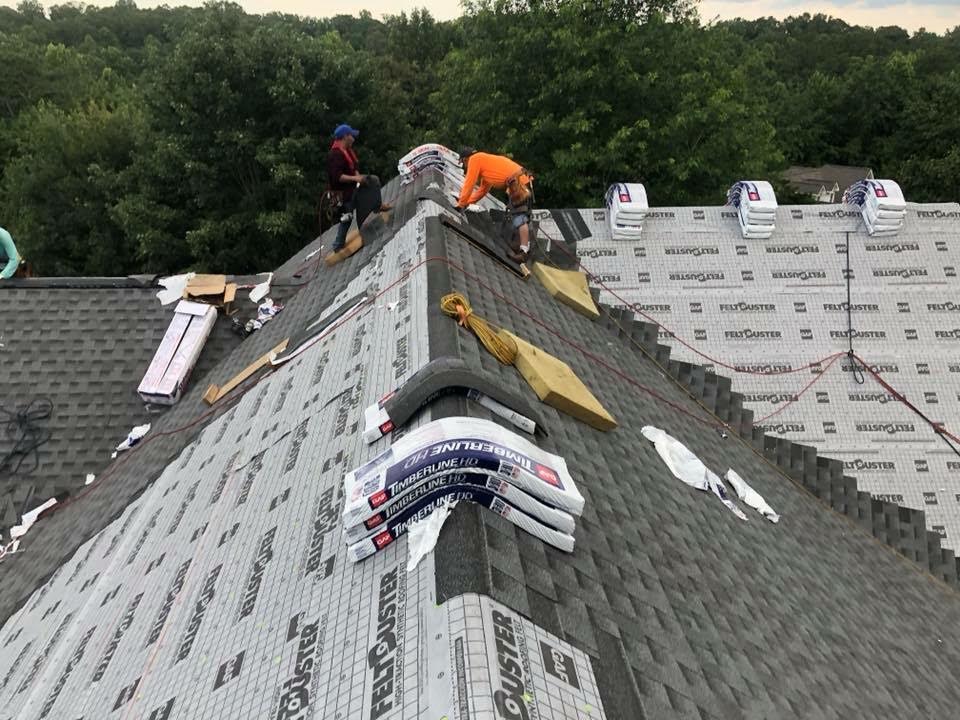In cold weather climates, the performance of roofs is put to the test. This article by United Contracting & Roofing, the distinguished commercial roofing services provider in Atlanta, GA, explores the resilience and durability of TPO roofs in facing the challenges of freezing temperatures. From their flexibility in handling cold to their resistance against cold cracks, TPO roofs are a reliable choice. Their strong winter seams and ability to withstand snow loads make them a preferred option. With the right insulation and regular inspections, TPO roofs ensure comfort and preparedness during winter.
Key Takeaways
- TPO roofs demonstrate exceptional flexibility to counteract the effects of cold contraction and can expand and contract without sustaining damage.
- Proper installation techniques and regular maintenance are crucial to maintain TPO roofs’ strength and winter seams.
- TPO roofs have excellent snow load resistance due to their construction, material properties, and reinforced seams.
- TPO roofs have reflective properties that promote efficient snow melt, reduce heat absorption, and minimize ice dam formation.
Flexibility in TPO Roofs: Beating Cold Contraction
TPO roofs from United Contracting & Roofing showcase remarkable flexibility designed to combat the impact of cold contraction. In commercial roofing, this attribute proves pivotal, guaranteeing the durability and longevity of the roof, especially amid harsh winter conditions. Our expert commercial roofing contractors consistently advocate for TPO roofs due to their exceptional ability to withstand the challenges posed by cold weather. Regarding commercial roofing solutions that prioritize resilience in all seasons, United Contracting & Roofing is a trusted partner committed to delivering superior performance and longevity for your roofing needs.
Now, what is a cold contraction? Cold contraction is a phenomenon that occurs when materials contract due to low temperatures. This can cause stress on the roofing system, leading to cracks, leaks, and other structural issues. However, TPO roofs have been specifically designed to combat this problem. The material used in TPO roofs contains additives that enhance their flexibility, allowing them to expand and contract without sustaining damage.
Furthermore, TPO roofs have a reinforced membrane that provides additional strength and resistance to cold contraction. This membrane protects against temperature changes, ensuring the roofing system remains intact and leak-free.
In addition to their flexibility, TPO roofs offer several other advantages for commercial roofing services. They have a reflective surface that helps to reduce energy consumption by reflecting sunlight and reducing the amount of heat absorbed by the building. This can lead to lower heating and cooling costs for businesses.
TPO’s Winter Toughness: Resisting “Cold Cracks”
United Contracting & Roofing advocates for TPO roofing, characterized by its fortified membrane and heightened flexibility, showcasing impressive resilience against ‘cold cracks’ caused by winter temperature fluctuations. This durability is necessary in areas with severe winter conditions, where the intense cold can lead traditional roofs to crack and degrade over time. In stark contrast, TPO roofs are purposefully engineered to endure such challenges, offering steadfast protection throughout the winter season. When seeking commercial roofing services prioritizing longevity and performance, United Contracting & Roofing champions TPO roofing as a reliable choice for enduring winter weather conditions.
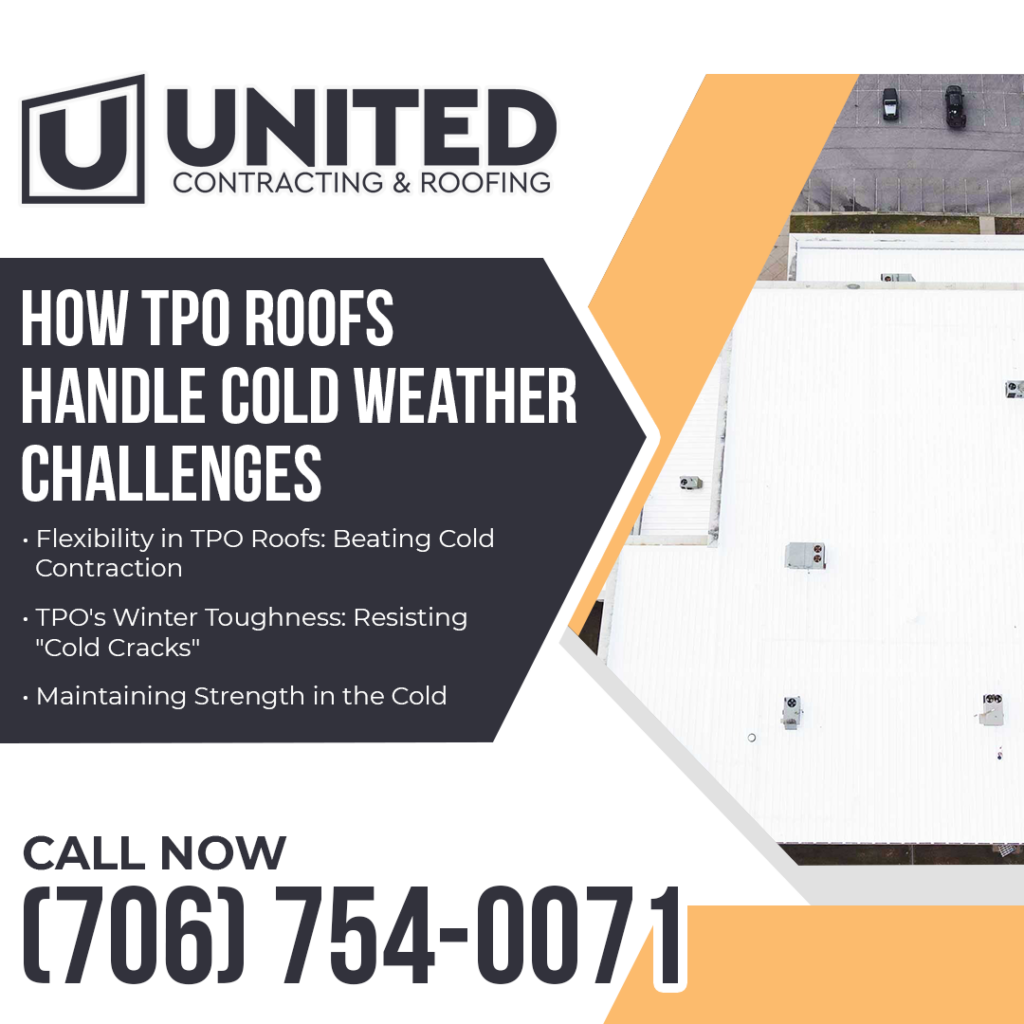
Here are three reasons why TPO roofs can resist ‘cold cracks’:
1. Flexible Membrane: TPO roofs are made of a highly flexible membrane that can expand and contract with temperature changes. This flexibility allows the roof to adapt to cold weather conditions without cracking or splitting. As a result, TPO roofs maintain their structural integrity and prevent moisture from seeping into the building.
2. Reinforced Construction: TPO roofing is constructed with reinforced materials, such as polyester or fiberglass, which provide additional strength and durability. These reinforcements help prevent cracking by distributing stress and maintaining the roof’s integrity even in extreme cold conditions.
3. Thermal Reflectivity: TPO roofs have excellent thermal reflectivity, effectively reflecting sunlight and preventing heat absorption. This helps to minimize temperature fluctuations on the roof’s surface, reducing the risk of cold cracks caused by rapid cooling and contraction.
Maintaining Strength in the Cold
A TPO roof must maintain its strength to ensure its durability and reliability in cold weather conditions. Cold temperatures can cause materials to become brittle and lose their structural integrity, making it essential for TPO roofs to have the strength to withstand these challenges.
One of the key factors in maintaining strength in the cold is the formulation of the TPO membrane itself. TPO roofs are typically made from a blend of polypropylene and ethylene-propylene rubber, which gives them excellent flexibility and resistance to cracking. This unique composition allows the TPO membrane to remain pliable and maintain strength, even in extremely cold temperatures.
In addition to the formulation, proper installation techniques also play a crucial role in maintaining the strength of TPO roofs in cold weather. Ensuring that the membrane is properly adhered to the roof substrate and using appropriate fasteners and seam treatments helps to prevent any weak points that could be vulnerable to cold-induced stress.
Consistent maintenance, including commercial roof repair services, is another crucial element in fortifying resilience against the cold. Regularly examining the roof for damage indicators, such as punctures or tears, and swiftly addressing them plays a pivotal role in averting the progressive weakening of the TPO membrane. Furthermore, clearing the roof surface of debris or accumulated snow minimizes the likelihood of additional weight and potential damage, emphasizing the importance of comprehensive care provided by commercial roof repair services.
Strong Winter Seams: TPO’s Welded Resilience
Their resilient and robust winter seams reinforce the strength of TPO roofs in cold weather. These welded seams play a crucial role in ensuring the durability and longevity of TPO roofs, even in the harshest winter conditions. Here are three key reasons why TPO’s welded seams are so resilient:
1. Superior Strength: Renowned for their outstanding strength, TPO roofs extend this quality to their welded seams. These seams are crafted by heat-welding the TPO membrane, establishing a bond that surpasses the power of the surrounding material. This technique guarantees the resilience of the seams, even in the face of drastic temperature fluctuations and substantial snow loads. The robust strength inherent in TPO’s welded seams offers dependable defense against leaks and water infiltration, providing building owners peace of mind throughout the challenging cold winter months.
2. Flexibility: TPO roofs have excellent flexibility, allowing them to expand and contract with temperature changes without compromising the integrity of the seams. This flexibility is essential in cold weather, where materials become more brittle. TPO’s welded seams can withstand expansion and contraction stress, preventing cracks or separations that could lead to roof leaks. This flexibility ensures that TPO roofs maintain their performance and durability throughout the winter season.
3. Resistance to Moisture: TPO roofs are highly resistant to moisture, and their welded seams contribute to this waterproofing ability. The heat-welded seams create a watertight barrier that prevents water from infiltrating the roof system. This is particularly important when snow and ice accumulate on the roof surface in cold weather. The strong and resilient nature of TPO’s welded seams ensures that the roof remains impervious to moisture, protecting the building and its contents from water damage.
Snow Load Resistance
The capacity to resist snow loads is crucial to TPO roofs’ resilience against cold weather challenges. Engineered with this consideration, TPO roofs are specifically designed to support the weight of snow, preventing potential structural damage resulting from excessive snow accumulation. Snow load, defined as the weight of snow on a roof surface, varies based on factors such as snow density, moisture content, and the duration of snowfall. United Contracting & Roofing’s commercial roofing services prioritize thoroughly installing TPO roofs to ensure they effectively manage snow loads, providing durability and protection in winter conditions.
TPO roofs are engineered to have a high snow load resistance due to their construction and material properties. The thermoplastic polyolefin (TPO) membrane used in these roofs offers excellent tensile strength and flexibility, allowing it to withstand the added weight of snow without compromising its integrity. Additionally, TPO roofs have reinforced seams that enhance their ability to resist snow load.
To ensure optimal snow load resistance, TPO roofs are often designed with a slope to facilitate snow runoff. This prevents the accumulation of large amounts of snow on the roof, reducing the risk of structural damage. In areas with heavy snowfall, it may be necessary to incorporate additional structural elements, such as trusses or beams, to enhance the roof’s snow load resistance.
Regular maintenance is crucial to maintaining the snow load resistance of TPO roofs. Snow should be promptly removed from the roof to prevent excessive weight buildup. This can be done using snow rakes or other suitable equipment. Additionally, it is essential to inspect the roof regularly for any signs of damage or stress, as these can compromise its ability to withstand snow load.
Reflectivity and Snow Melt
TPO roofs are typically used in commercial roofing and can adeptly navigate cold weather obstacles using their reflective qualities to boost snowmelt. The reflective characteristics of TPO (Thermoplastic Olefin) roofing materials enable them to deflect a substantial portion of solar radiation, preventing heat absorption and lowering the roof’s surface temperature. This attribute plays a pivotal role in melting snow and ice, particularly significant in areas characterized by cold climates.
Here are three ways in which the reflectivity of TPO roofs helps with snowmelt:
1. Increased Energy Efficiency: The reflective surface of TPO roofs helps reduce heat absorption, lowering the energy required to heat the building. By preventing excessive heat loss through the roof, TPO roofs contribute to maintaining a comfortable indoor temperature during cold weather conditions.
2. Accelerated Snow Melting: The reflective properties of TPO roofs aid in the rapid melting of snow, as the sun’s rays are not absorbed but reflected into the atmosphere. This leads to a quicker snowmelt process, preventing heavy snow accumulation on the roof, which could potentially cause structural damage.
3. Reduced Ice Dam Formation: Ice dams occur when heat from the building’s interior escapes through the roof, melting the snow and refreezing at the eaves. The reflective properties of TPO roofs help to minimize heat loss, thus reducing the formation of ice dams. This helps prevent water leakage into the building, which can significantly damage the roof structure and interior components.
Insulation for Winter Comfort
Proper insulation is essential for TPO roofs in cold weather climates to ensure winter comfort, especially when considering commercial roofing services. TPO roofs, or thermoplastic olefin roofs, are recognized for their durability and energy efficiency. However, without adequate insulation, these roofs in commercial roofing services can still be susceptible to heat loss and cold drafts during the winter months.
Insulation acts as a barrier, preventing heat transfer between the interior and exterior of a building. In cold weather climates, it helps keep the building warm and prevent cold air from seeping in. This is particularly important for TPO roofs, as they can be more prone to heat loss than other roofing materials.
One of the key benefits of TPO roofs is their ability to reflect sunlight and reduce heat absorption. However, when the sun’s rays are less intense in winter, insulation becomes crucial for maintaining a comfortable indoor temperature. Without proper insulation, the heat generated from the building’s heating system can easily escape through the roof, increasing energy consumption and heating costs.
When installing insulation for TPO roofs, it is essential to consider the R-value, which measures the insulation’s thermal resistance. A higher R-value indicates better insulation performance. The recommended R-value for TPO roofs in cold climates is typically higher than in milder climates, as it helps combat the colder temperatures and stronger winds.
In addition to reducing heat loss, insulation also helps to minimize condensation and moisture buildup within the roof cavity. This is important in cold weather climates, where freezing temperatures can lead to ice damming and other moisture-related issues.
Regular Inspections for Winter Preparedness
At United Contracting & Roofing, our team of expert commercial roofing contractors emphasizes the importance of regular inspections to ensure winter preparedness for TPO roofs in cold weather climates. TPO (thermoplastic olefin) roofs, a specialty of ours, are renowned for their durability and resilience against extreme weather conditions. Despite their strength, even the most robust roofs can be susceptible to damage during harsh winter months. Our regular inspections are crucial in identifying potential issues, enabling our skilled team to perform timely repairs or maintenance and prevent further damage. Trust United Contracting & Roofing for comprehensive commercial roof repair services dedicated to the longevity and durability of your roofing system.
To ensure winter preparedness for TPO roofs, here are three key areas that United Contracting & Roofing check during regular inspections:
1. Check for cracks or punctures: Cold weather can cause the TPO membrane to become brittle, making it more prone to cracking or puncturing. Inspect the entire roof surface for any visible signs of damage, such as cracks, tears, or holes. Pay close attention to areas with stress points, such as around vents, skylights, or HVAC units.
2. Inspect seams and flashings: The seams and flashings of a TPO roof are critical in preventing water infiltration. Over time, these components can deteriorate or become loose, compromising the roof’s integrity. Inspect the seams and flashings for signs of separation, lifting, or deterioration. Ensure that they are properly sealed and secure.
3. Clear debris and inspect drainage: Winter weather can bring leaves, branches, and other debris that may accumulate on the roof. It is essential to remove any debris as it can obstruct drainage systems and lead to water pooling on the roof surface. During inspections, check that the drains, gutters, and downspouts are clear and functioning correctly to prevent water buildup.
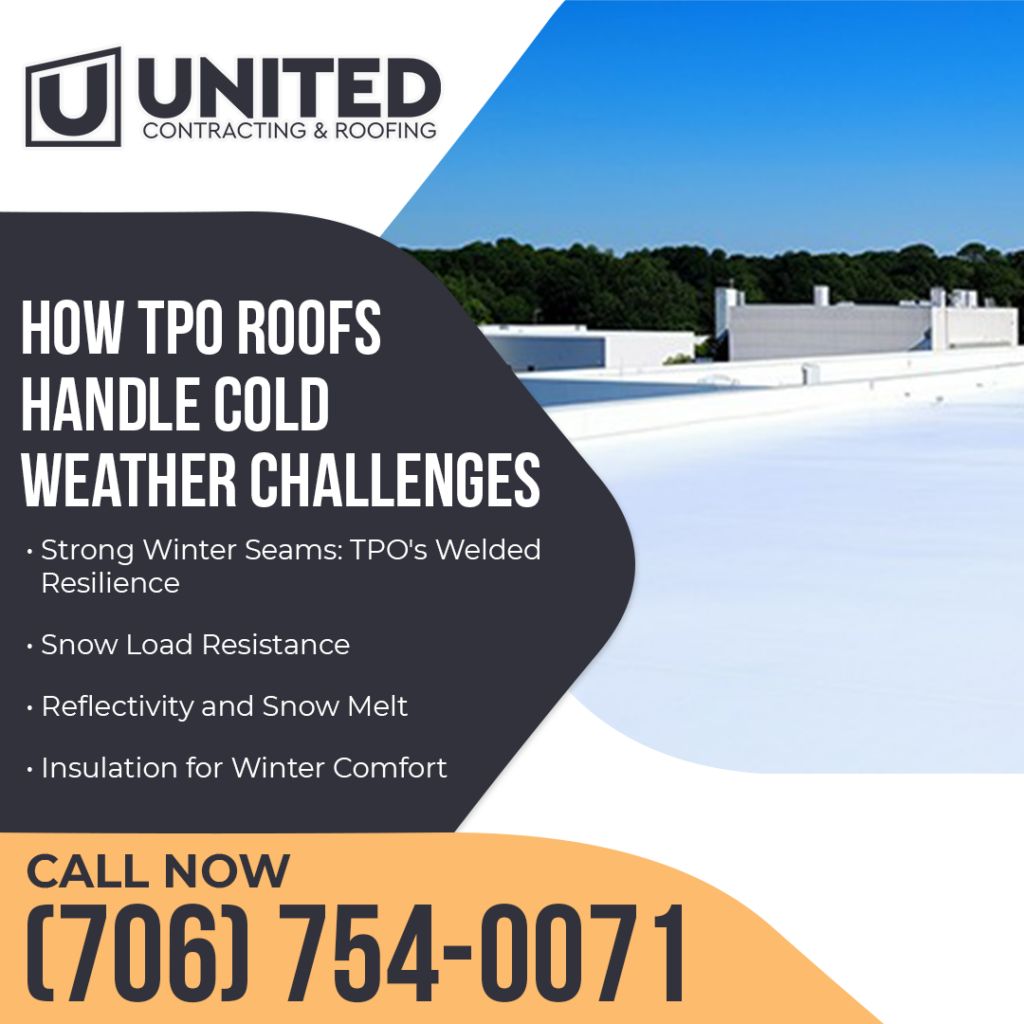
Frequently Asked Questions
How does the flexibility of TPO roofs help in preventing damage during cold weather?
At United Contracting & Roofing, specializing in commercial roofing in Atlanta, GA, we recognize the paramount role of TPO roofs in preventing damage during cold weather conditions. TPO, or thermoplastic olefin, is a highly flexible material uniquely designed to expand and contract with temperature changes. This intrinsic flexibility ensures that our roofing systems remain intact and resilient, mitigating the risks of cracks, leaks, and other damage that often arise when materials become brittle in cold weather.
With a commitment to accommodating temperature fluctuations, TPO roofs installed by United Contracting & Roofing effectively maintain their structural integrity, providing our clients in Atlanta, GA, with long-lasting protection against the challenges posed by cold weather. Trust us for expert solutions tailored to the specific demands of commercial roofing in the Atlanta area.
Can TPO roofs withstand extreme temperature changes without developing cracks?
At United Contracting & Roofing, leading commercial roofing experts in Atlanta, GA, we understand the significance of TPO roofs in facing extreme temperature changes without compromise. TPO, or thermoplastic olefin, is a testament to its reliability, boasting exceptional flexibility that allows it to expand and contract seamlessly with temperature fluctuations. This innate quality prevents the roof from becoming brittle and developing cracks, averting potential leaks and other forms of damage. Additionally, TPO roofs feature a reinforced membrane, adding extra strength and durability to their ability to withstand extreme temperature variations. As one of the leading commercial roofing companies in Atlanta, GA, United Contracting & Roofing is your trusted partner, providing reliable and durable TPO roofing solutions crafted to excel in cold weather climates.
What measures are taken to ensure that TPO roofs maintain their strength during low temperatures?
At United Contracting & Roofing, your trusted source for commercial roof repair services, ensuring the resilience of TPO roofs in low temperatures involves implementing strategic measures. One key strategy involves the utilization of specialized TPO membrane formulations designed to withstand the challenges of cold weather conditions. These formulations often incorporate additives that enhance the material’s flexibility and resistance to cracking.
Furthermore, our commitment extends to employing proper installation techniques and insulation to minimize the impact of low temperatures on TPO roofs. United Contracting & Roofing stands as your trusted partner, offering comprehensive solutions that include regular inspections and maintenance, playing a pivotal role in identifying and addressing potential issues before they compromise the strength of your commercial roof.
How does TPO’s welded resilience contribute to the durability of winter seams?
At United Contracting & Roofing, a leading provider of commercial roofing services in Atlanta, GA, we recognize the exceptional durability of TPO roofs and their capacity to tackle cold-weather challenges head-on. A critical element contributing to their robustness is the meticulously crafted welded seams. Through heat-welding the TPO membrane, these seams have strong and watertight bonds. During winter, these welded seams stay resilient and resistant to temperature fluctuations, ensuring the enduring durability of the roof. This welded resilience is a crucial factor in preserving the strength and integrity of TPO roofs, especially when faced with the rigors of harsh winter conditions. Count on United Contracting & Roofing for top-notch commercial roofing solutions in Atlanta, GA, prioritizing durability and resilience every season.
Are TPO roofs designed to withstand heavy snow loads without collapsing?
At United Contracting & Roofing, where excellence meets commercial roofing services, we understand TPO roofs’ critical role in withstanding heavy snow loads without compromising structural integrity. Engineered for resilience, the high strength and flexibility of TPO roofing membranes enable them to adeptly distribute the weight of snow evenly, mitigating the risk of structural damage. Our commitment to superior commercial roofing services extends to the fact that TPO roofs boast excellent resistance to cold temperatures, ensuring the membrane remains stable and intact. The welded seams of TPO roofs, meticulously executed by our skilled team, further contribute to their durability, preventing potential leaks or damage caused by snow accumulation. Choose United Contracting & Roofing for comprehensive solutions that equip your commercial roof to confidently face the challenges of cold weather and heavy snow loads.
Conclusion
In conclusion, at United Contracting & Roofing, your trusted commercial roofing contractors in Atlanta, GA, TPO roofs are a testament to remarkable resilience in confronting cold weather challenges. With flexibility designed to withstand contraction caused by low temperatures and resist ‘cold cracks,’ TPO roofs assure the longevity of their integrity. Even in freezing conditions, TPO roofs maintain their strength and durability, credited to the precision of their welded seams. Notably, they can endure heavy snow loads and facilitate snowmelt through reflectivity. Insulation practices reinforce the commitment to winter comfort, and our regular inspections, conducted by expert commercial roofing contractors in Atlanta, GA, ensure comprehensive preparedness for the cold season. Choose United Contracting & Roofing for tailored solutions prioritizing durability and resilience in every aspect of your commercial roofing needs.

